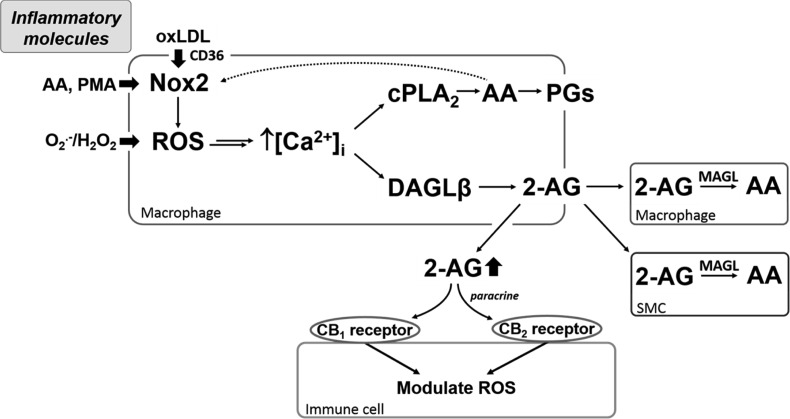Fig. 11.
Model describing how physiological and nonphysiological stimulants can activate signaling pathways to enhance 2-AG and prostaglandins (PG) biosynthesis via NADPH oxidase (Nox)-derived ROS. Several physiological mediators [e.g., oxLDL, arachidonic acid (AA)] and nonphysiological chemicals [e.g., phorbol 12-myristate 13-acetate (PMA)] can stimulate Nox2. Elevated ROS levels in cells (either via Nox2 activation or exogenous oxidants) cause a transient increase in intracellular calcium concentration ([Ca2+]i) that activates diacylglycerol lipase (DAGL)-β and cytosolic phospholipase A2 (cPLA2), thereby increasing the synthesis of 2-AG and oxygenated AA metabolites (PGs), respectively. 2-AG can be released extracellularly where it acts in a paracrine and autocrine manner to possibly counteract inflammation and oxidative stress via cannabinoid (CB) receptor-evoked signaling in immune cells (15). 2-AG can also be degraded by neighboring cells or by cells that produce it. Double arrow between ROS and [Ca2+]i indicates that oxidants can release intracellular Ca2+ stores by several mechanisms, including the inactivation of MAPK phosphatases, which maintains MAPKs in their active state (22). Dotted arrow indicates that cPLA2-derived AA can stimulate Nox2 (33). H2O2, hydrogen peroxide; MAGL, monoacylglycerol lipase; O2−, superoxide.

